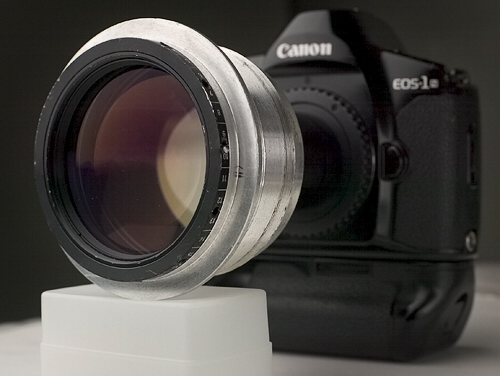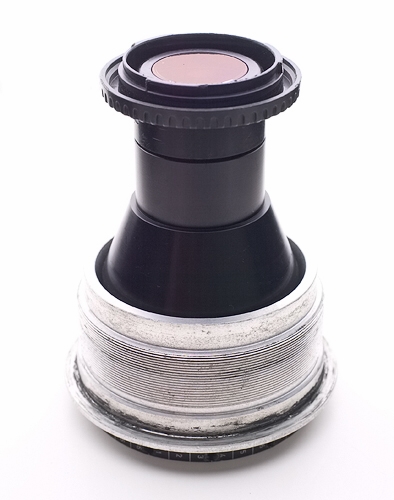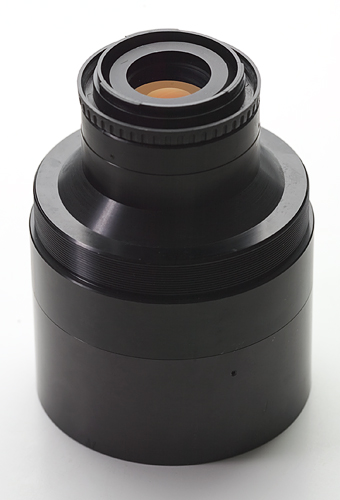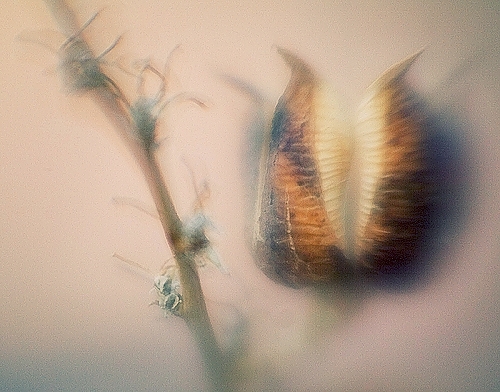Many of you are familiar with Blair Bunting, one of the premier commercial portrait photographers in the United States, and a good friend of mine. A couple weeks ago we were chatting about lenses when he brought up this project he did several years back. I instantly wanted to share it, and we tweeted an image of his 50mm f/1.4 next to his 110mm f/.95, which many of you thought was fake. It wasn't.
Blair has always had an eye for the meticulous that borderlines at the somewhat outrageous. "Being self taught I found myself obsessing with the technical to a degree that the artistic side of photography was an afterthought. At first it was just grasping the concept of 18% grey, then it was learning the stop reach of my sensor, then it was getting rid of depth of field only to bring it back in later years. It serves a little ironic that I craved bokeh so much when young and now I cringe whenever someone uses that word in a conversation.


"Back in 2003, I found myself with a lens line up from 24 to 200, all faster than f/1.8, so to say I enjoyed depth of field isolation was an understatement. However, there was a part of me that thought the 85mm f/1.2 just wasn’t shallow enough. I had tubed the thing beyond its nodal point reach to where the min focus point was behind the front element. However, a part of me still felt there was less depth to be achieved."

For what purpose could one need something with less depth? It didn't matter. What mattered to Blair was that if it could be done, he wanted to do it. "There was not a practical use for the lenses, but there was learning to be had in their use."
"This quest impacted my grades as I would often sit in Italian classes trying to calculate the angle of light conversion for a lens instead of paying attention (2 years of Italian and all I know is how to say 'My name is cheese'). Being a true photo geek at heart, I listed lenses by absolute aperture size in millimeter rather than stop.
"Fortunately for me during this time, there was an industrial factory that did X-ray analysis that had gone under and surplussed its equipment. I called them up and offered to buy all their lenses for cheap as I intended to mount them to a Canon 1D.













"The lenses that came in the box ranged from 110mm to 50mm and had aperture values of 1.1 to 0.50. Unfortunately, they were made for industrial X-ray machines, so mounting them would not be easy. Some had nodal points that wouldn’t work with a mirror and others had rear elements that would support the lens. None of them had focus rings and would be strictly DTS pulled, not to mention no chips meant that the truest form of manual exposure would be required as most cameras aren’t set for f/.50.

"I eventually mounted some with cut body caps and others with plumbing tubing with a CD case. Min focus distance was very minimal, often only a couple inches, but depth of field is a function of distance as it is a derivative of iris, so this was a plus.
"Texture was important and the quality of the images that came from the lenses was often determined by the progression from focus to out of focus rather than the quality of the blur itself. At the end of the day, I never really showed the images all that much and sold off most of the lenses I had made. Like so many other aspects of photography, I was merely looking to show myself I could do it."







For more ridiculousness from the mind of Blair Bunting, head on over to his blog.
Published with Blair Bunting's permission.







great shots, i love them
okay, this is insane!
Reading this i kind of felt found out, since I´m a shallow-DOF-enthusiast myself. I had never occurred to me to build the lenses myself though. Maybe some third party lens maker is granting my wishes and builds a 100mm f0.8 for the EF mount.
Ridiculousness, indeed. I'm glad he learned something, but I can't imagine spending this much time on something that I knew would have no practical value. But that's just me. :)
A guy on a photo forum here in Quebec took appart a huge Sigma lenses (north of 300mm... can't remember what exactly) that didn't have AF on his Canon..
Bought the AF from a teleconverter and retrofited it to the lenses and ... yeah by know you get the idea! hahaha
Insane!
I could be completely wrong about this, but if they were X-ray lenses wouldn't there be radiation concerns? Probably negligible amounts, and those images are really cool, but still...
Yes, actually Blair was concerned about this at first, but the amounts were so negligible that it was perfectly safe.
An experiment worth talking about. Do it all the time though not in photography field. These kinds of personal explorations should not be frowned upon. I'm sure that in the end, he came out with a lot more practical knowledge.
i love how he made these awesome lenses, all with a plastic, body cap as the mount....pretty lame in that aspect....
Not really any different than some production EF-S lenses that have plastic mounts. It works, so why is it lame? There was no AF to be had, no focus ring on the lenses, so why go to the trouble to put a real metal or even plastic EF mount from a hacked lens on it?
Congrats dude... and Thanks for the post... Cheers!!
This is just lovely. I'm nutty for fast lenses.
You can buy an adapter to mount a "C" mount TV camera lens on a Canon EOS body, but it can only be used for macro shooting.
Resulting images are poor and not worth the effort.
You sir, have missed the point. But thanks for playing.
I disagree. I really dig the effect these lenses give the photos. They are very surreal and kinda dream like
Love the pencil shot!
these lenses made some really nice effects. I would have loved to experiment with them, but I don't think I would want to take the effort to purchase and build them myself. Especially if there is no resale value. I just don't have it to spare.
Actually... resale value was quite nice. Kinda why he sold them.
If this is what you wanted to do, why not get a Lensbaby and learn how to use Photoshop?
What a great ideal, it is call creative thinking, the things he learned will be used for the rest of his life. He was willing to invest in his art. and not think about the cost only the result.
the shot of the #2 pencil alone makes it worth the trouble. Outstanding!
I glued an old 50mm 1.8 pentacon lens to my d5000, max focusing distance is about 2.5m, but boy is it sharp as a portrait lens with closer subjects... Too bad the "focus point" or whatever it's called is about 0.5cm long, so a bit of camera shaking can defocus your shot and render it total c**p :P
A fine obsession!
It's ridiculous! ESOTERICUSBULLSHITICUS!